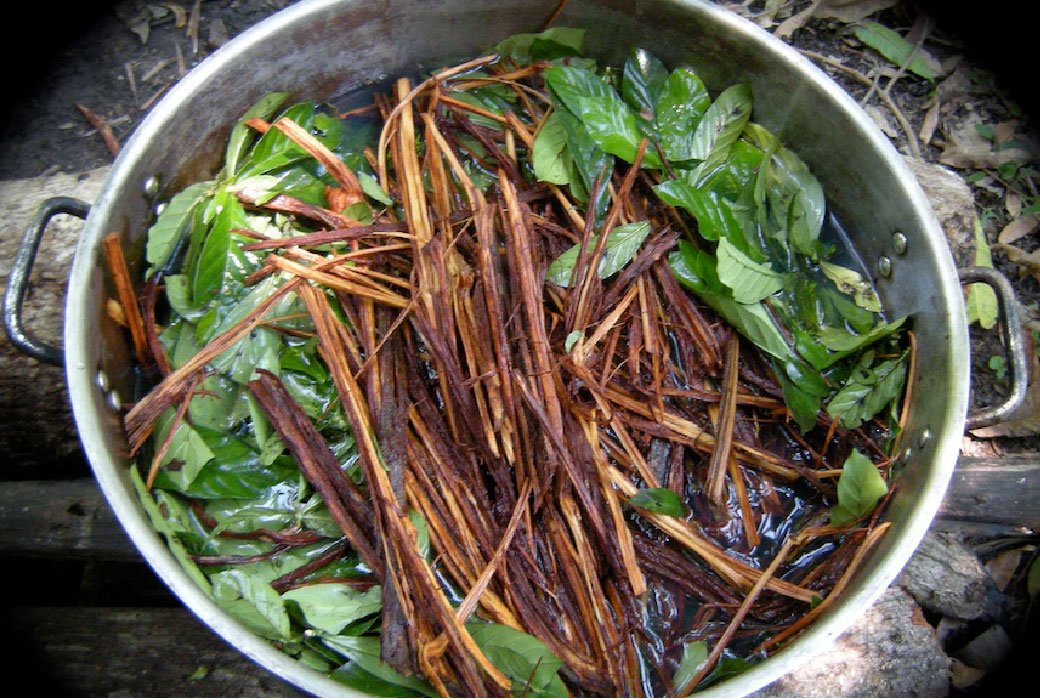Business
Ayahuasca Ceremonies: Understanding the Power of Plant Medicine

Ayahuasca, a sacred plant medicine, has been used for centuries by indigenous communities in the Amazon basin for healing and spiritual purposes. This potent brew, known for its transformative effects, has gained international attention for its ability to facilitate profound personal growth and healing. As more people seek alternative paths to self-discovery and emotional well-being, ayahuasca ceremonies have emerged as a powerful gateway to understanding the interconnectedness of mind, body, and spirit. This article delves into the world of ceremony using ayahuasca, exploring their origins, processes, and transformative potential while highlighting the importance of respecting this ancient tradition.
What is Ayahuasca?
Ayahuasca is a traditional brew made from two primary ingredients: the Banisteriopsis caapi vine and the Psychotria viridis leaf. Together, these plants create a psychoactive mixture that induces altered states of consciousness. The Banisteriopsis caapi vine contains natural monoamine oxidase inhibitors (MAOIs), which allow the psychoactive compound dimethyltryptamine (DMT) found in Psychotria viridis to take effect.
Historically, ayahuasca has been a cornerstone of Amazonian shamanic practices, used for physical healing, spiritual exploration, and connecting with the natural world. It’s considered a “teacher plant” by many indigenous cultures, revered for its ability to provide wisdom and guidance. Today, its use has expanded beyond the Amazon, attracting individuals worldwide who seek its transformative effects.
The Cultural and Spiritual Significance of Ayahuasca Ceremonies
For indigenous communities, ayahuasca ceremonies are more than just a ritual—they are a way of life. These ceremonies are deeply rooted in cultural and spiritual traditions, offering participants an opportunity to commune with the spirit world, seek guidance, and heal physical and emotional wounds. The brew is seen as a conduit to connect with Mother Earth, ancestors, and the divine.
Shamans, or curanderos, play a central role in these ceremonies. They act as guides, creating a sacred and safe environment for participants. Through songs, known as icaros, and rituals, shamans facilitate the flow of energy, helping participants navigate their inner journeys. The ceremony’s structure is designed to provide both individual and collective healing, reinforcing the interconnectedness of all beings.
The Science Behind Ayahuasca
Ayahuasca’s effects are not just spiritual but also have a scientific basis. The brew’s active component, DMT, interacts with serotonin receptors in the brain, inducing vivid visions and altered states of perception. The MAOIs in Banisteriopsis caapi prevent the breakdown of DMT, allowing it to be orally active and prolonging its effects.
Research into ayahuasca’s therapeutic potential has shown promising results. Studies suggest that it can help alleviate symptoms of depression, anxiety, PTSD, and addiction. Ayahuasca’s ability to increase connectivity in brain networks and promote neuroplasticity may explain its capacity to facilitate emotional breakthroughs and rewire negative thought patterns. These findings are paving the way for integrating ayahuasca into modern mental health practices while emphasizing the need for responsible and informed use.
What Happens During an Ayahuasca Ceremony?
Preparation is key to a meaningful ayahuasca experience. Participants are often required to follow a strict diet and abstain from certain substances, such as alcohol and caffeine, in the weeks leading up to the ceremony. This preparation helps cleanse the body and mind, creating a receptive state for the brew’s effects.
The ceremony itself typically takes place in a sacred space, often at night. Participants sit in a circle, with the shaman or facilitator at the center. After the brew is consumed, the effects begin to take hold within 30 to 60 minutes. Participants may experience vivid visions, emotional releases, and profound insights during this time. The shaman’s icaros, along with the use of instruments like rattles and drums, guide the journey, helping participants navigate their inner landscapes.
Each individual’s experience is unique, influenced by their intentions, emotional state, and the environment. Some may face challenging emotions or memories, often referred to as “shadow work,” while others may experience a sense of unity, peace, or euphoria. Physical sensations, such as nausea or purging, are also common and are considered a form of cleansing and release.
The Healing Potential of Ayahuasca
The transformative power of ayahuasca lies in its ability to facilitate deep emotional and psychological healing. Many participants report gaining insights into personal traumas, understanding negative behavioral patterns, and experiencing a renewed sense of purpose. The brew’s ability to unlock repressed emotions allows individuals to confront and release their pain, often leading to profound healing.
Ayahuasca’s benefits extend beyond the individual, fostering a greater sense of empathy and interconnectedness. Participants often describe feeling a deep connection to nature and a heightened awareness of their place in the universe. These experiences can lead to lasting positive changes in relationships, lifestyle, and overall well-being.
Risks and Challenges of Ayahuasca Use
While ayahuasca offers significant healing potential, it is not without risks. The brew’s intense effects can be overwhelming, particularly for individuals with unresolved trauma or pre-existing mental health conditions. Physical side effects, such as nausea, vomiting, and increased heart rate, are common but generally short-lived.
The growing popularity of ayahuasca has also led to concerns about “ayahuasca tourism.” Unscrupulous facilitators and poorly conducted ceremonies can pose serious risks to participants. To ensure safety, it is essential to seek out reputable shamans and organizations that prioritize ethical practices and participant well-being.
Additionally, the cultural appropriation of ayahuasca raises ethical concerns. Respecting the origins and traditions of this sacred practice is crucial to preserving its integrity and honoring the communities that have safeguarded its wisdom for generations.
Integration: Life After the Ceremony
The true work of ayahuasca begins after the ceremony, during the integration process. This phase involves reflecting on the insights gained and applying them to daily life. Journaling, therapy, and connecting with supportive communities can help participants make sense of their experiences and foster lasting growth.
Integration also requires patience and self-compassion. The lessons learned during the ceremony may take time to unfold, and the journey of healing and transformation is ongoing. By maintaining a balanced lifestyle and staying connected to their intentions, participants can continue to benefit from the wisdom of ayahuasca long after the ceremony ends.
Ayahuasca ceremonies offer a profound opportunity to explore the depths of the human psyche and connect with the sacred. As a powerful plant medicine, ayahuasca has the potential to heal emotional wounds, inspire personal growth, and foster a deeper connection to the natural world. However, this transformative journey requires preparation, respect, and a commitment to integration.
As ayahuasca gains recognition in modern society, it is essential to honor its origins and approach its use with humility and reverence. By doing so, individuals can unlock the full potential of this ancient practice, embarking on a path of healing and self-discovery that resonates far beyond the ceremony itself.
For More More Visit, Coopermagazine
-

 Celebrity11 months ago
Celebrity11 months agoWho Is Mallory Plotnik?: The Untold Story of Phil Wickham’s Wife
-

 Celebrity10 months ago
Celebrity10 months agoWho Is Allison Butler?: The Life and Influence of Kirk Herbstreit Wife
-

 Celebrity10 months ago
Celebrity10 months agoMeet Christina Erika Carandini Lee?: All You Need To Know Christopher Lee’s Daughter
-

 Celebrity10 months ago
Celebrity10 months agoWho Is Rebecca Sneed?: All You Need To Know About Lyle Menendez’s Wife
















